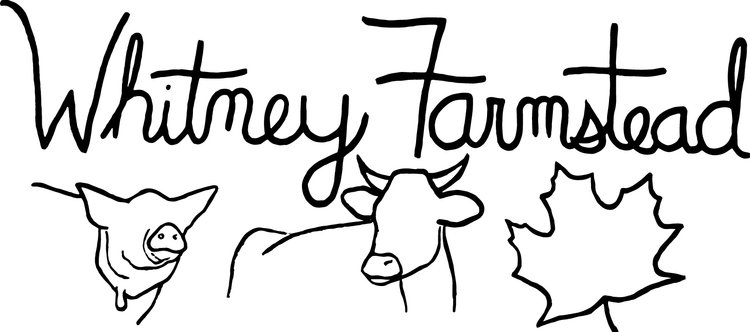Our Cattle and Sheep are 100% Pasture Raised:
Here's what we're doing to make sure they are getting what they need to have good body conditions, produce milk, and have healthy pregnancies.
Perennial Pasture Mix
We recently planted the field north of the farmstead with a perennial pasture mix. Last year we planted hay fields, and this will be our first pasture planting. We based this mix from of the suggestions of Newman Turner, a farmer from the U.K, who in his lifetime, wrote a lot about diverse herbal pastures, and the importance of offering to your livestock the greatest diversity of plant species possible, so that what they eat may be their food and also their medicine. Most commercial pasture mixes contain 3 or 4 types of grass and legumes. This mix includes 18 species of grasses, legumes, and herbs:
Orchardgrass
Timothy
Perennial Ryegrass
Tall Fescue
Meadow Fescue
Alsike Clover
Medium Red Clover
Ladino White Clover
Birdsfoot Trefoil
Forage Chicory
Appaloosa Alfalfa
Tetila Italian Ryegrass
Plantain
Chicory
Sheep’s Parsley
Small Burnet
Canadian Milkvetch
Cicer Milkvetch
Yellow Peas for Winter Protein Source
In a 4 acre field in the center of the farm we are planted a Yellow Pea variety that can be used either as a forage/hay crop, or a grain crop. If we leave it to be a grain crop, it will provide a protein rich field source (and an alternative to soybean meal) for our pigs and chickens. If we decide to make hay, it will provide diversity to our winter feed, and an added protein source in addition to alfalfa and clover. While grasses are an importance part of a cows feed, it is the legumes that give the cows nourishment to produce milk. We grew a similar variety last year, as part of a cover crop mix, and the cows loved it (and we did too, as it tastes like snap peas).
Winter Stockpiled Forage
In another effort to diversify our winter feed, we are planting 3 acres of Purple Top Turnips and Kale. These will be planted in July and grown all through the fall to then be grazed in the early to mid winter. When the typical grazing season is long passed, our herds will be feasting on kale and turnips!
